AMD Ryzen 7 8700G Performance
We wanted to quickly update our performance charts to add the AMD Ryzen 7 8700G to our Linux results. This should give some sense of the performance difference between a mini PC with the 7040 series and a desktop PC with the Ryzen 7 8700G.
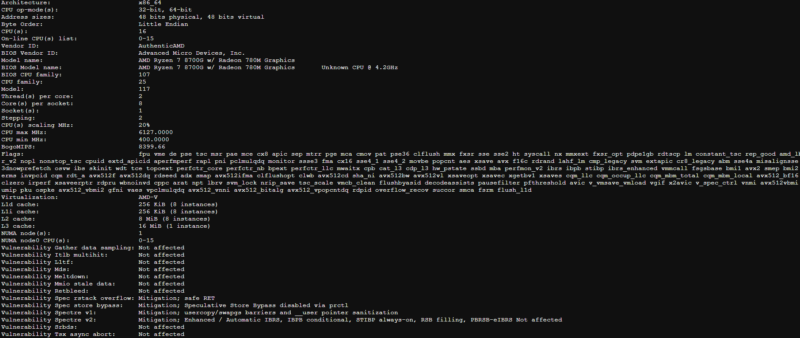
This is still an 8-core/16-thread Zen 4 chip so it is a fairly well-known quantity.
Python Linux 4.4.2 Kernel Compile Benchmark
This is one of the most requested benchmarks for STH over the past few years. The task was simple, we have a standard configuration file, the Linux 4.4.2 kernel from kernel.org, and make the standard auto-generated configuration utilizing every thread in the system. We are expressing results in terms of compiles per hour to make the results easier to read:
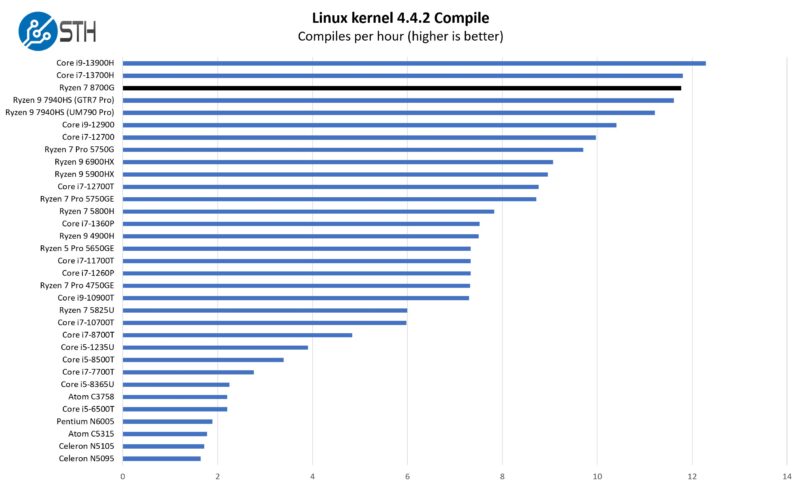
Performance on the CPU side is good, right between the Ryzen 9 7940HS, a very similar CPU/ GPU combination, and the Core i7-13700H.
7-zip Compression Performance
7-zip is a widely used compression/ decompression program that works cross-platform. We started using the program during our early days with Windows testing. It is now part of Linux-Bench.
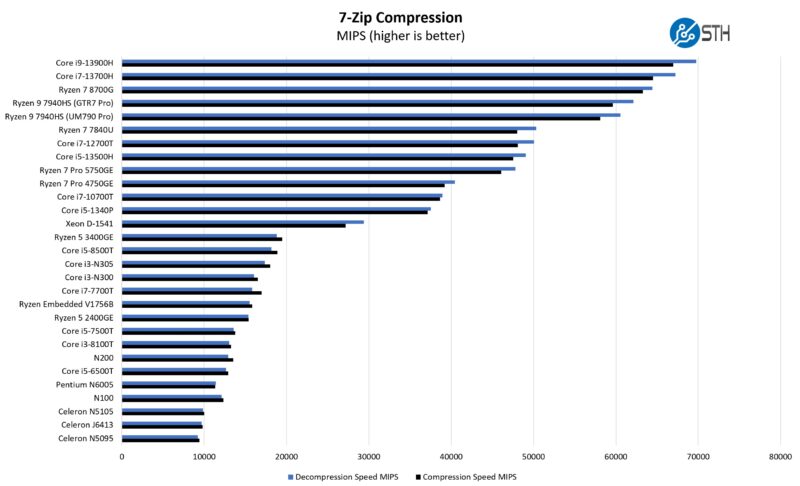
The charts are going to get quite repetitive here. Something to keep in mind though is that the CPU performance is close between Intel and AMD in these charts, but the big feature of the Ryzen 7 8700G is the integrated GPU and NPU.
OpenSSL Performance
OpenSSL is widely used to secure communications between servers. This is an important protocol in many server stacks. We first look at our sign tests:
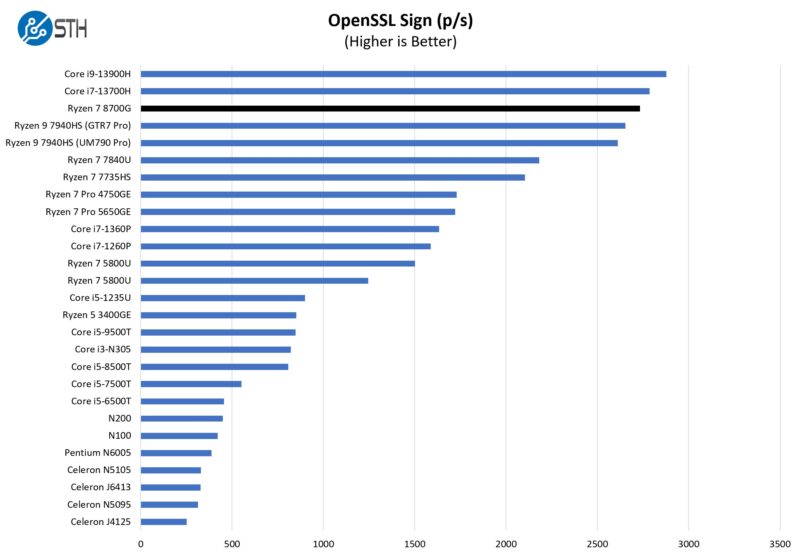
Here are the verify results:
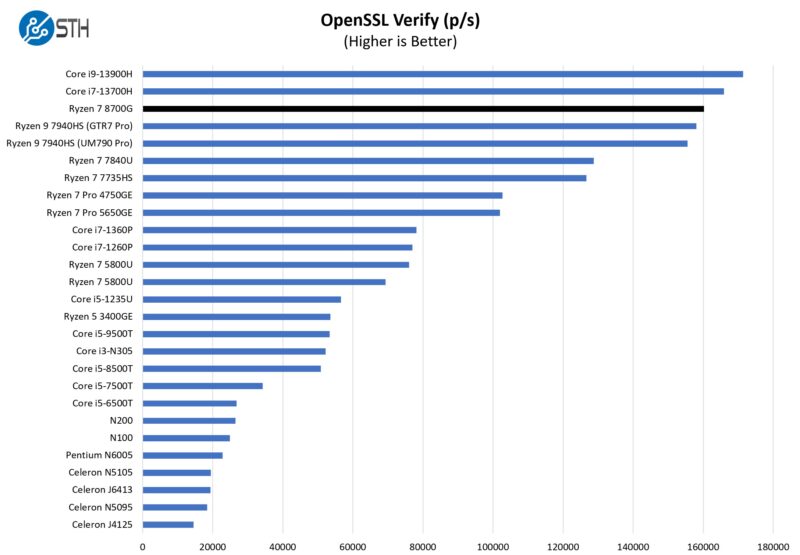
Something to keep in mind is that the Intel results are much closer in actual power consumption to the Ryzen 7 8700G versus the Ryzen 9 7940HS.
Geekbench 5 Comparison
Driving this change, it is probably worth looking quickly at Geekbench 5 results:
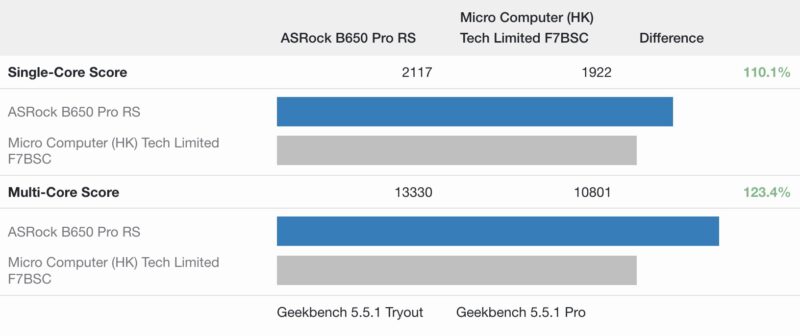
This was a quick look at a Geekbench 5 run compared to a Ryzen 9 7940HS from one of the mini PCs we reviewed. Note that this is Windows on the mini PC to Linux on the ASRock B650 Pro. Take this as directional rather than exact. There is a difference, but perhaps the bigger takeaway is that it is not like 2x the performance going from a 45W TDP to a 65W TDP part with the same architecture and core count.
AMD Ryzen 7 8700G Virtualization Host
For those wondering if you can use this system as a virtualization host, we installed Proxmox VE on the system and it worked out of the box.
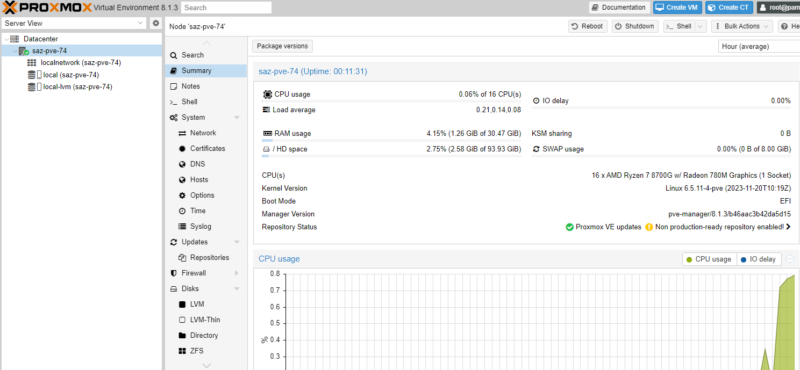
This has us very excited for systems like the ASRock Rack AM5D4ID-2T BCM we reviewed where this can become a server option for many. One may point out that there are only 8 cores, but Intel’s newest Xeon E-2400 is also only 8 cores as we saw in the Supermicro SYS-511R-M Intel Xeon E-2488 1U server review. This has the higher-end GPU and NPU so it could be a really exciting time for AMD Ryzen single socket servers.
AMD Ryzen 7 8700G Power Consumption
In terms of power consumption, the 65W TDP part certainly used more than we are accustomed to some of the more high-end mobile/ mini PC parts using. Our little configuration saw idle around 38W and maximum power was around 150W. That is around 50% more than we saw from the Ryzen 7040HS parts in mini PCs.
Final Words
Overall, the new chips are solid and largely what we have seen before. What should be slightly more exciting to STH readers is this CPU/ GPU solution making its way to bespoke systems. Finally, one can build a system with Zen 4 and the Radeon 780M.
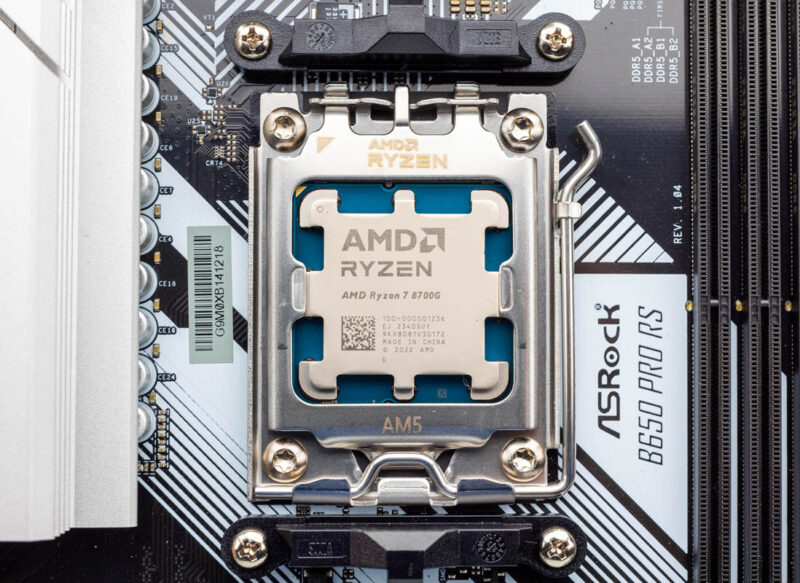
Perhaps the bigger takeaway is that this is the first of the next-gen AI PCs. Being the first of the new generation is always a bit tricky. Usually, features like utilizing NPUs take a few quarters to garner software support. In the meantime, the new hardware accelerators tend to get much better. The idea of having an NPU in the chips is exciting despite this being an area where we would expect outsized performance gains in future generations. To us, the big win is deploying something like this today and being able to do video inference on the NPU and GPU decode pipelines.

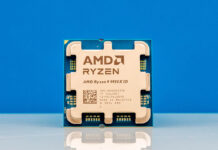
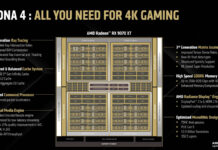

Just my 2 cents on the following marketing claim:
“The world’s first desktop processor with a dedicated AI engine”
The first counter-example that comes to mind is Apple’s M1 featuring the Apple Neural Engine.
One could argue that the M1 is a mobile-oriented chip put into desktop computers, but AMD’s claim still remains a bit tough to swallow.
Thanks for including the 7940hs in the charts. Much appreciated.
Can you show the command line used to compile the Linux kernel ? Thanks !!